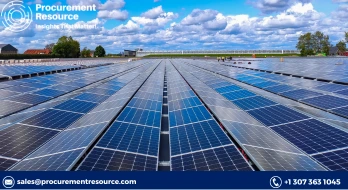India's Solar Irradiance is 7% Lower Compared to the Long-Standing Average
.webp)
India has a substantial extent of solar energy capacity. Approximately 5,000 trillion kWh of energy is incident over India's land area each year, with most areas receiving 4-7 kWh per square metre per day. Solar photovoltaic power can be effectively harnessed, allowing for massive scalability in India.
Solar also provides for distributed power generation and rapid capacity addition with short lead times. Off-grid, decentralised, and low-temperature applications will benefit rural electrification and meet other energy needs for power, heating, and cooling in both rural and urban areas.
The social and economic benefits include reduced drudgery among rural women and girls engaged in long-distance fuelwood collection and cooking in smoky kitchens, reduced risks of contracting lung and eye ailments, job creation at the village level, and, ultimately, an improvement in the standard of living and the creation of opportunities for economic activities at the village level.
A recent study found that solar irradiance over the country over the last ten years was 7% lower than the long-term average, which could have significant implications for productivity and returns from solar power projects in India.
Solargis, a data and software firm for solar investments, conducted the study to highlight the challenges that solar asset owners face due to extreme weather and long-term irradiance variability levels that deviate from long-term averages are frequently used to underpin production estimates and financial models.
The Slovakia-based firm said in a statement, that Solargis irradiance maps show up to 7% less average solar irradiation for the (Indian) subcontinent over the last four years, reflecting local asset manager’s concerns about a decline in irradiance amounts.
It went on to say that in India, irradiance variability is especially noticeable near highly developed areas where aerosols and cloud cover can impact resource availability. Suppose developers do not take this data into account.
It could lead to solar farms underperforming, with wider implications for investor confidence in one of the world's fastest-growing solar markets," the firm said. Solargis released a ten-year analysis of solar irradiance from 2012 to 2021 today, illustrating the effects of significant resource variability on several key global solar markets, including India, Australia, and North America.
They are seeing margins on global solar projects tighten due to various factors such as the phase-out of tax credits and subsidies, price volatility, and rising supply chain costs.
High-quality solar data will assist in better understanding and addressing deviations from expected production, forecasting short-term performance, and ultimately supporting effective integration into modern digitalized grids, stated Solargis CEO, Marcel Suri. Significant variation has been observed in North America, India, and Australia, both above and below long-term averages, highlighting the variability challenge presented by solar, a promising but intermittent renewable energy source.
Among the policy measures implemented was the declaration of a trajectory for Renewable Purchase Obligation (RPO), which included Solar, Waiver of the interstate transmission system (ISTS) charges, and losses for interstate sales of solar and wind power for projects to be completed by March 2022, Must-run status, Guidelines for solar power procurement through a tariff-based competitive bidding process, Solar Photovoltaic System and Device Deployment Standards, Rooftop solar installation and smart city development guidelines Amendments to building codes to require the provision of roof-top solar for new construction or buildings with a higher Floor Area Ratio, Infrastructure status for solar projects, Raising tax-free solar bonds, obtaining long-term loans from multilateral agencies, and so on.

.webp)

